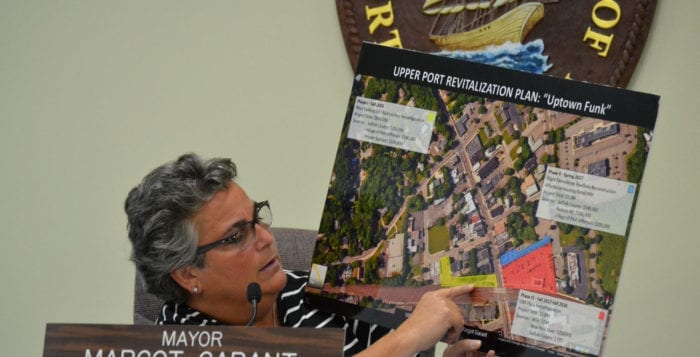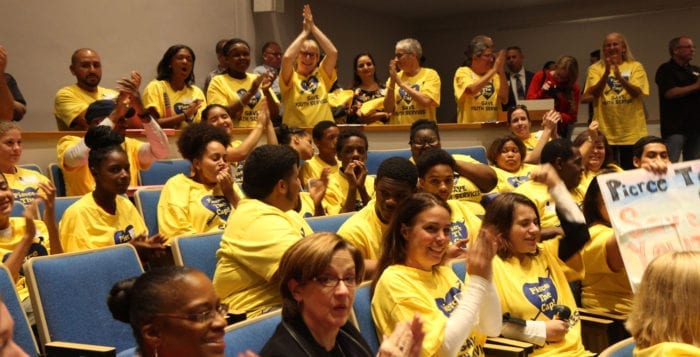By Heidi Sutton
Just in time for fall, Stony Brook resident Cindy Sommer has released her first children’s book, “Saving Kate’s Flowers” (Arbordale Publishing). Recommended for ages 3 to 8, the 32-page picture book, with gorgeous illustrations by Laurie Allen Klein, follows little Kate the rabbit in her quest to save the flowers in her family’s garden from dying at the end of the summer. After her mother teaches her about perennials, annuals and how to save seeds, Kate asks to bring the annuals inside. Unfortunately, Kate’s father is allergic to flowers! Will Kate find homes for all the flowers before the cold weather sets in?
As an added bonus, the book also includes educational resources in the back to learn more about the parts of a plant, the life cycle of plants and how to pot and identify flowers. Sommer recently took time out from preparing for a book signing and reading at the Suffolk County Farm in Yaphank on Oct. 1 to answer a few questions about her adorable new book.

Can you give a little background about yourself?
I have lived in Stony Brook all my life. I attended Three Village schools and graduated from Ward Melville High School. I then graduated from SUNY Oneonta with a BA in English. I’ve always been interested in reading and writing, particularly horse books. Once I had my two daughters, I found some time to finally write.
What was your favorite book as a child?
All the Black Stallion and Marguerite Henry books. I think I had them all. Why did you decide to write this children’s book? When my daughter, Samantha, was young, she asked me “Why do flowers die in winter?” and I thought that was a very good question. I wanted to give her a simple answer, but there was no easy way. So I wrote this story. Kate is actually Samantha.
Do you have a garden at home?
Yes, I have a big backyard but a small vegetable garden. I grow some cucumbers, tomatoes and basil. I have lots of flowers … I love flowers. I love anything that blooms for most of the summer; Stella d’oro lilies, hydrangeas and dianthus.
Do you have any rabbits in your yard?
Every year we have rabbits in our yard. This year there seemed to be a lot! I think they knew my book was coming out.
Will there be more adventures with Kate in the future?
There are plans for a sequel. I don’t want to give it away, but it might involve snow. Hopefully, there will be many more adventures.
You are a member of the Long Island Children’s Writers and Illustrators. Can you tell us a little about the group?
A local librarian told me about LICWI when I first started writing. I was so nervous the first time I went to a meeting, I didn’t go in! I found that they are a wonderful encouraging group, willing to help out any writer, beginner or experienced. I learn new things every time I go to a meeting. But they will tell you the truth in a constructive way. If you can’t take criticism, you should not join a writer’s group. It has made my writing stronger, and I appreciate all of their opinions and great advice.
We meet every second Saturday a month during the school year at St. Joseph’s College in Patchogue. We usually have a break over the summer with a garden party. For more information, you can see visit their website: www.licwi.com.
What advice would you give to someone who is writing their first book?
Read the genre for the type of book you want to write. I have read hundreds of picture books. Get to know the structure, the language and the pacing. Join a local writer’s group and the SCBWI (Society of Children’s Book Writers and Illustrators). Try to go to writing conferences. I used to go to Hofstra when they had their conferences. Sadly they no longer have them. I looked forward to meeting editors and going to workshops. SCBWI has started offering some writing events at the Huntington Public Library, and they hold many in NYC. Wait for your story to be the absolute best it can be before you send it out anywhere. And write because you love to write. Most authors do not make much money in real life.
Why do you think reading to a young child is so important?
Reading is something they will be doing for the rest of their lives, so it’s something that should be encouraged from the very start. If they are given good basics and a love of books at an early age, they will have the tools they need to accomplish whatever they want to in life.
Tell me about the book signing event on Oct. 3.
I will be in the Children’s Garden at the Suffolk County Farm and Education Center in Yaphank on Oct. 3 at 1 p.m. during the farm’s PumpkinFest, with a rain date of Oct. 4. I will probably read my book at 1:30 p.m. with signings followed by a flower-themed craft available until around 3:30 p.m.
Any more book signings in the works?
Since this is my first book, I am eager to get started. I am doing a presentation for a girls’ book club soon. My schedule is open for presentations in elementary schools. My program is registered through Eastern Suffolk and Nassau BOCES. I would love to do a reading and craft storytime for libraries and bookstores.
 “Saving Kate’s Flowers” is available at www.Amazon.com, the publisher’s website at www.arbordalepublishing.com and www.barnesandnoble.com. For more information about the author, visit www.cindysommer.com.
“Saving Kate’s Flowers” is available at www.Amazon.com, the publisher’s website at www.arbordalepublishing.com and www.barnesandnoble.com. For more information about the author, visit www.cindysommer.com.
Please note that this article has been updated:
The PumpkinFest in Yaphank has been rescheduled to Oct. 3 and 4.






















